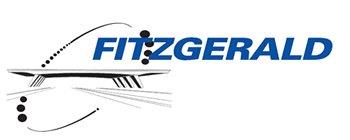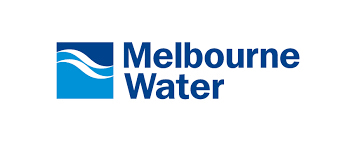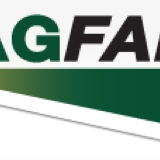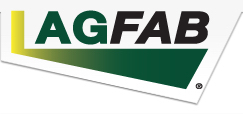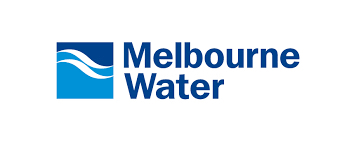Information
-
1.0 INSPECTION DETAILS
-
Inspection Number:
-
Project:
-
Date/Time:
-
Inspected by:
2.0 SAFETY REQUIREMENTS
-
ACCESS WAYS – level, clearly defined, well-lit, clear of rubbish and materials.
-
PENETRATIONS –covered or barricaded, covers trafficable and secure
-
HOUSEKEEPING – Work area clean, materials stacked and no trip hazards.
-
PEDESTRIAN ACCESS – Safe, no obstructions, gates closed, signage up
-
SITE SECURE – Fence intact and site secured from unauthorised acces
3.0 PRE-START
-
COMPLETED – Conducted and communication written on allocated form
-
ACKNOWLEDGMENT – ALL workers on site signed on to pre-start form
4.0 PLANT
-
INDUCTION – inducted, Risk Assessment, maintenance records
-
OPERATOR – ticketed/licenced, verified as competent
-
PRE-START – logbook completed, faults reported, all safety items working
-
EXCLUSION ZONE – established and signposted
-
LIFTING GEAR – current tag, stored correctly, suitable WLL
-
LIFTING (CRANES) – MRC on boom, Crane Safe current, crane pad engineered, operator holds correct HRW licence
-
LIFTING (EXCAVATORS) – MRC/SWL on boom, suited to load/burst valves >1T capacity, bucket removed, engineered lift points
-
LIFT STUDY – Completed as required
5.0 ELECTRICAL
-
TOOLS AND LEADS – current test tag, raised off ground on insulated stands/hooks
-
RCDs – used, current test tag, tested before use
-
Working at Heights - Harnesses are attached, fall protection used
-
Plant & Equipment - Clearly identified, clean, load limits visible and known, test equipment within calibration date
6.0 PERMITS
-
ACTIVE PERMIT – Permit in place (hot works / excavation / confined space / work at height / client specific), approved and current
-
APPROVAL – Permit signed by Responsible Person
-
ACKNOWLEDGMENT – All relevant workers signed on to permit
7.0 EMERGENCIES/INCIDENTS
-
DRILLS – Undertaken as per drill schedule – refer to PSP
-
SIGNAGE – Evac diagram, emergency procedures and contacts displayed in appropriate areas
-
FIRST AID – First aid kit checked minimum quarterly, designated site first aiders displayed around site and with kit
-
REPORTING – Incidents recorded on form and reported to National HSEQ Manager
-
8.0 WORKING AT HEIGHTS (WAH)
-
GENERAL – Protection from fall, certificates of competency, permit (where harness required)
-
LADDERS – secured, no damage, industrial & suited to task (i.e no work from straight ladders)
-
USE OF WORKBOX – Work Box Checklist completed and signed off
-
SCAFFOLD – Complete & suitable for use, Scaff tag in date (maximum 30 days)
-
WORKING PLATFORMS (EWPs) - Fit for purpose, inducted, harness/lanyard provided and used
-
EMERGENCY – rescue plan in place and practiced
8.0 HOT WORKS
-
GENERAL – set up safely, PPE, equipment tested and tagged, Hot Works Permit, extinguisher within 5m
-
WELDING – Screens / blankets in place, PPE, warning signage, tested and tagged, compliant leads, extinguisher
-
TOTAL FIRE BAN – FRV / CFA (Vic), CFS (SA) exemption permit in place
9.0 EXCAVATIONS
-
NOTIFICATION (VIC) – WorkSafe notification sent 3 days prior
-
SERVICES – DBYD, positively identified and marked on ground
-
CONSTRUCTION – benched, battered, shields
-
PROTECTION – barricades, covered, Daily Inspection checklist completed and signed off
-
ACCESS – ladder, step or ramp access provided
-
EMERGENCY – procedure in place and drilled / practiced
10. CONCRETE / STRUCTURES
-
FORMWORK – Temporary Works Design in place and approved, constructed as per TWD
-
FORMWORK – delineation, no protruding screws, de-nailing, fall protection
-
REINFORCING BARS – Adequate reo end bar protection (horizontal bars = yellow caps, vertical bars <1m = timber, cap with steel plate
11. PILING (TUBULAR, SHEET, CFA)
-
STORAGE – tube piles/CFA pile cages chocked to prevent rolling, sheet piles overlapped/on dunnage
-
SERVICES – DBYD for location, services identified and marked, clear of O/H services, Elec. Spotter
-
FALL PROTECTION – Barricades around pile auger, tube piles >900mm above ground, open piles/holes (<900mm or ground level) covered and cover secured
-
INSTALL – Vibe heads/hammers free of leaks, secondary sling in place, exclusion zone
12. HAZARDOUS SUBSTANCES / DANGEROUS GOODS
-
STORAGE – bunded storage, signage, segregated, spill kits, extinguisher/s
-
DOCUMENTS – SDSs available, register on site, workers trained in use.
-
<br>PPE – Available, all required being worn as per SDS
13. ASBESTOS / LEAD RISK WORKS
-
NOTIFICATION – Regulator notified of ACM removal/high risk lead works
-
REMOVAL – ACM/lead removal by licensed personnel, air monitoring, clearance certificate by hygienist.
-
PPE – All required being worn as per SWMS
-
DISPOSAL – transport and disposal certificates
14. WORKING ON, OVER or NEAR WATER
-
INDUCTION – Personnel on board inducted to vessel
-
SAFETY – PFDs worn, in date and in good condition, life ring/s onboard
-
WATER CONDITIONS SAFE – Tidal works, wash, swell, forecast weather
-
VESSELS – Survey current, securely moored, safe access, prestart completed.
-
BARGES – Personnel capacity as per survey, stability assessment, plant/loads secured, Unattended Checklist completed
15. GENERAL
-
PPE (HARD HAT, GLASSES, HI VIS, BOOTS, SLEEVES, TROUSERS) – worn as required
-
SWMS – In place for the task, signed by workers, approved by management
-
AMENITIES – serviceable, clean, complete.
-
FIRE EXTINGUISHERS – Correctly located and inspection current (6 months).
-
SIGNAGE – Relevant signs in place
4.0. ENVIRONMENTAL REQUIREMENTS CRITERIA
-
AIR QUALITY – Dust and sawdust controlled. No excessive dust generated. Use of water cart to suppress dust.
-
AIR QUALITY – Plant emissions, fumes, gasses, no vehicle emitting visible smoke continuously for >10 seconds
-
AIR QUALITY – No loose debris, odours, leaking gasses, etc
-
WATER QUALITY – No waste discharged into the sea or waterway (river or creek)?
-
WATER QUALITY – Water quality parameters (e.g., Turbidity, pH, dissolved oxygen, etc) tested where specified in the Contract?
-
FLOATING BOOM / SILT CURTAIN – Boom intact, secure & complete
-
SEDIMENT CONTROL – Sediment control measures (eg. gravel sausages, silt fencing) in good order, maintained?
-
SEDIMENT CONTROL – Vehicles not depositing material on public roads
-
SOIL MANAGEMENT – Stockpiles of soils neat, no sign of erosion, scouring?
-
SOIL MANAGEMENT – Disturbed areas rehabilitated / landscaped as specified?
-
SOIL MANAGEMENT – no stockpiles of contaminated soils, disposed of as required
-
SPILL KITS – within 10m, stocked, suitable for hydrocarbon
-
NOISE CONTROL – No excessive noise from machinery or plant.
-
NOISE CONTROL – Noisy activities worked during prescribed work hours?
-
VIBRATION – monitoring as required, records and calibration maintained
-
WASTE MANAGEMENT – Concrete washout discharged onto plastic lined pit or receptacle?
-
WASTE MANAGEMENT – Skips/bins on site for construction waste
-
FLORA & FAUNA – No fill around tree trunks, barriers around trees to be retained
-
FLORA & FAUNA – "No Go Zones" in place? No harm to native animals or threatened species
-
COMPLAINTS - Complaints and NCRs recorded and resolved?
OTHER COMMENTS
-
undefined
-
undefined
-
undefined
-
undefined
-
undefined
-
undefined
-
undefined
-
undefined
-
undefined
-
undefined
-
undefined
-
undefined
